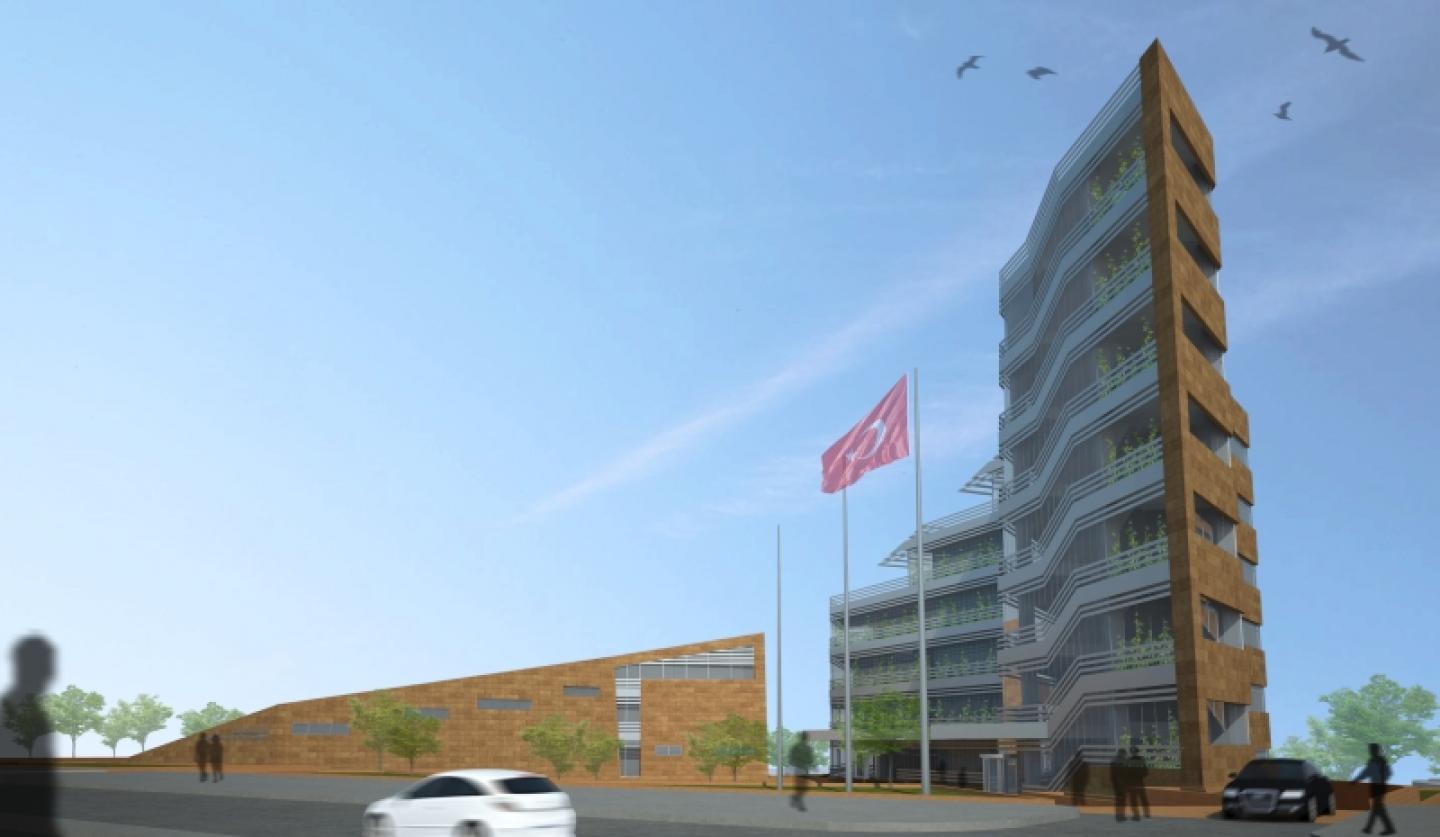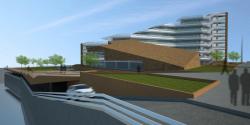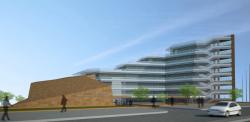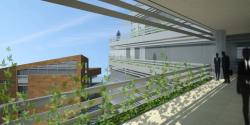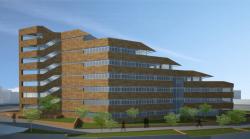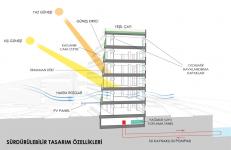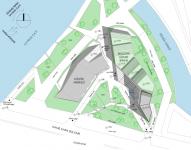climate conditions, prevailing wind direction, scenery and location in relation to the urban context, as well as the savrun river encircling the site have been the starting points of the design, along with the program requirements.
due to their distinct s and working hours,the municipality building and the cultural center were designed as separate buildings. the positioning of both structures was directly influenced by the prevailing wind direction.
the municipality building that has higher number of users and longer ing hours was rotated to face the prevailing wind from southwest, in order to benefit from natural cross ventilation. the cultural center designed as a sloping mass with a low height was positioned perpendicular to the municipality building in order to avoid the obstruction of the prevailing wind.
to maximize the effectiveness of the natural air flow, the depth of offices were kept lower than 12m and the program was met by stacking the required sections on top of each other. the shallow plan scheme will also enhance the penetration of daylight whereas allowing a more effective separation of different departments.
both buildings were pushed to the setback limits so that a public park was d in-between, while increasing the visibility from the kamil kara boulevard.
a pedestrian axis parallel to the municipality building was formed between the neighboring park on the savrun river side of the site and the traffic direction from the town center. entrances to both buildings were planned along that axis. vehicle entrance to the site will be strictly limited to the mayor, protocol guests, ambulances, firefighters and transportation of goods.
the distinctly shaped municipality building and cultural center were formed in a way that the two separate structures are perceived as a single sloping mass that starts ascending from the ground at one edge of the site and reaches its full height at the other end. the main ive of the mass study has been to achieve the monumental effect of an “artificial peak” that will become a new point of reference of kadirli in addition to the sulemis peak.
the opaque surfaces of façades were clad with travertine, which as a natural material will blend with the landscaping, refer to the stone masonry heritage of the vernacular architecture and reflect the image of “robustness” that is expected from a public building. metal and glass are preferred as the only other materials for the rest of the façade due to their “contemporary”, “homogenous” and “light” characteristics, contrasting with the “natural”, “heterogeneous” and “heavy” effect of travertine.
a semi-open corridor covered with foldable glass skin was planned as the main circulation route alongside the southwest facing façade of the municipality building. “transparent” and “open” character of a public building was emphasized through the visibility of the circulation area from the outside.
furthermore, the circulation corridor that is narrowing down on higher floors in correlation with the decreasing circulation is also designed to as a sun-breaking architectonic component against the intensive solar radiation from southwest.
no artificial heating/cooling system in addition to the foldable glass and climbing plants will be installed in the circulation area that will only be temporarily occupied by people during the daytime. by minimizing the permanently covered building volume, the energy consumption of the hvac system will be significantly reduced.
due to the long span of the circulation area, two separate entrances were planned for the municipality building, one closer to the kamil kara boulevard being the mayor entrance the other one close to the adjacent park on the savrun river side being the main entrance.
instead of one for each entrance, a single canopy for both entrances was designed as a continuation of the façade. its surface spanning along the southwest façade will cover an area larger than 200m², which will be clad with pv panels providing the electricity used in exterior lighting.
the main entrance to the municipality building was emphasized with a 3 stories high atrium designed above, which will also serve as an exhaust chimney for the ascending warm air through the automatic outlets on its façades and roof.
departments inside the municipality building that are closely related to public were located on the lower floors and those visited less were pushed upwards. the distribution of spaces has led to a cascading building mass allowing large open terraces accessible from the circulation areas on upper floors. the terraces will be covered with green roof layers, which will absorb storm water and provide effective heat insulation while continuing the surrounding landscape on the.
the grand hall, storage room and other related cultural center spaces were designed within a single building mass that will be covered with the same travertine skin as the municipality building.
the south/ southwest facing façades of the cultural center will be predominantly opaque against the harsh summer sun whereas the north/northwest façades will be open to the diffused daylight, in order to minimize the energy needed for artificial cooling and lighting.
the interior of the cultural center will be visually connected with the landscaping and the view of savrun river and sulemis peak through the transparent façade facing northwest.
the required public parking on the neighboring park was solved as a semi open underground garage accessed by a ramp so that the greenery will not be occupied by cars, the buildings and the surrounding landscaping will not be separated and the vehicles will be sheltered from the negative climate conditions.
2009
2009
6870m2
Reinforced concrete + steel structure
Ali Manço, Zühtü Usta, Gufran Baykal
